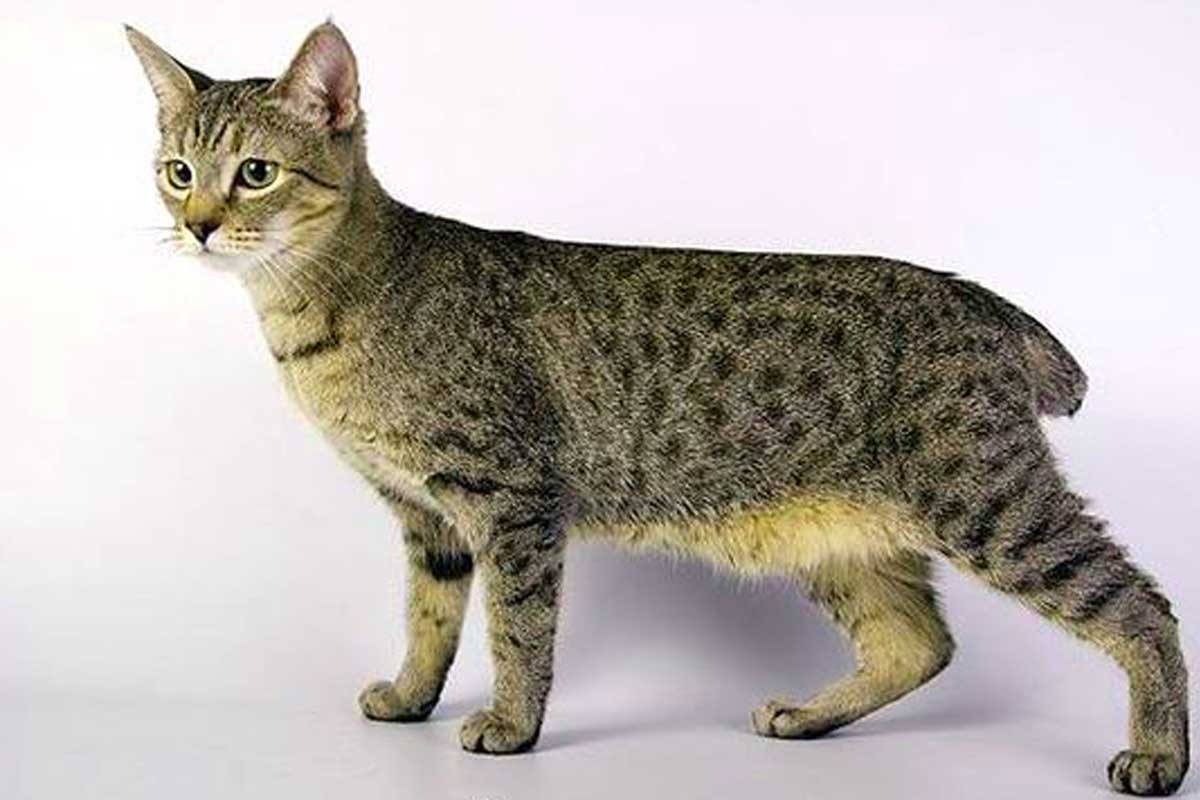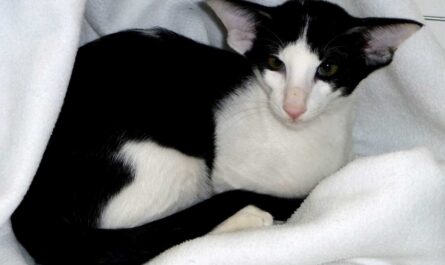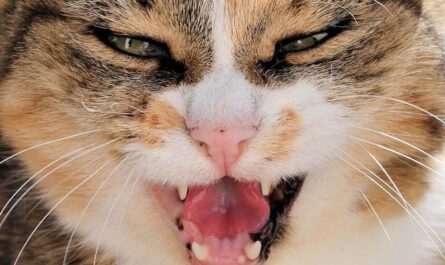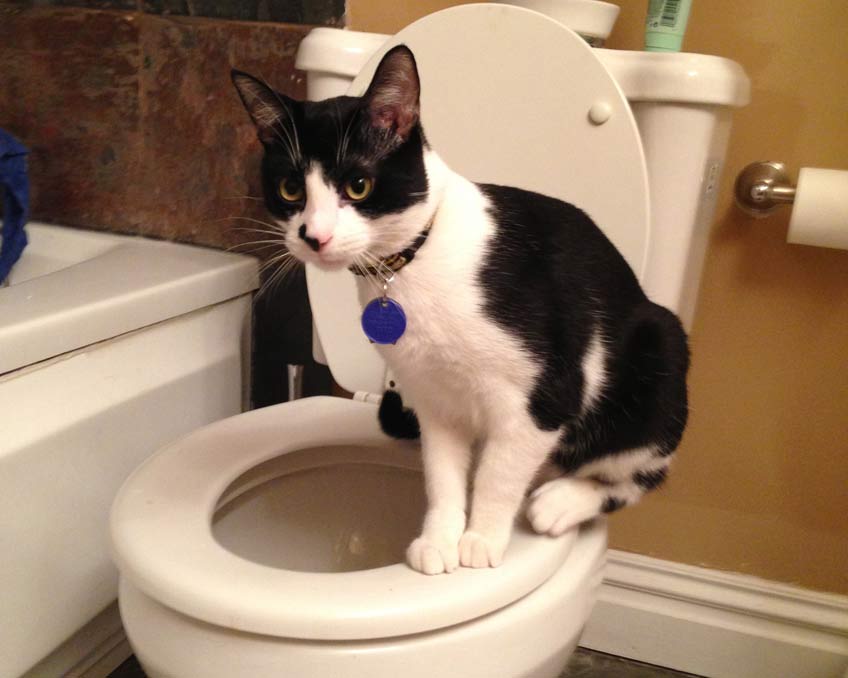The Feline Estrous Cycle is a natural phenomenon for your cat. Have you ever witnessed your once cuddly feline companion morph into a miniature lioness overnight? Frantic yowling, frantic rubbing against furniture, and a sudden disdain for your usual petting routine – these are just some of the telltale signs that your cat might be experiencing heat.
Understanding the feline estrus cycle, also known as heat, is crucial for every cat owner. It’s a natural biological process that allows your cat to reproduce, but it can also bring a whirlwind of unexpected behaviors and potential health concerns. Fear not, fellow cat guardians! This comprehensive guide will equip you with the knowledge to navigate this phase with confidence and care. We’ll delve into the fascinating biological dance of hormones, explore the telltale signs of heat, and offer helpful tips for managing your cat’s comfort and well-being during this time.
Demystifying the Biological Basics: A Peek Inside Your Feline Friend
Imagine your cat’s body as a finely tuned orchestra, where each organ plays a specific role in harmony. The female reproductive system is a vital part of this symphony, consisting of key instruments like the ovaries and the uterus. The ovaries, nestled near the kidneys, are responsible for producing eggs (ova) and essential hormones, while the uterus acts as a cozy haven for nurturing potential offspring.
Now, let’s talk about the conductor in this feline orchestra – hormones! Estrogen and progesterone are the maestros of the estrus cycle, taking turns to set the pace. During heat, a surge of estrogen kicks off the performance, signaling your cat’s body that it’s ready for mating. This hormonal shift is what triggers the behavioral changes you might observe, like increased vocalization, heightened affection (sometimes a little too much!), and a strong desire to explore the outdoors in search of a mate.
The frequency and duration of your cat’s heat cycle can vary depending on several factors. Age plays a role, with younger cats often experiencing more frequent heat than their seasoned counterparts. Breeds can also influence the cycle, with some breeds exhibiting more regular patterns than others. Individual health is another factor to consider, as underlying medical conditions might affect the timing and intensity of heat cycles.
It’s important to note that not all feline divas announce their heat cycle with grand fanfare. Some cats experience “silent heats,” where the behavioral changes are subtle or even absent. This is why keeping a watchful eye for any deviations from your cat’s usual routine is essential, even if the yowling isn’t as dramatic.
The Signs They’re Sending: Recognizing Heat Symptoms
Just like humans going through puberty, cats in heat exhibit a range of behavioral and physical changes. Here’s a handy guide to help you decipher your feline friend’s unique “love language”:
Vocalization Symphony: A Chorus of Communication
One of the most noticeable signs of a cat in heat is a dramatic shift in their vocal repertoire. Gone are the soft purrs and playful meows. Instead, you might be treated to a symphony of loud yowls, insistent meows, and even trilling sounds. These vocalizations are their way of advertising their availability to potential mates and letting the whole world (or at least the neighborhood) know they’re ready to mingle.
Restlessness & Increased Affection: A Purrfect Storm of Emotions
During a heat cycle, your once-content kitty might morph into a ball of boundless energy. They might become restless, pacing around the house, or exhibit bursts of playful (or mischievous!) behavior. This surge in activity is fueled by a surge of hormones, making them eager to explore and find a mate. Additionally, you might notice a newfound craving for attention. Prepare for an increase in head boops, leg rubs, and purring as your feline friend seeks extra cuddles and affection.
Rubbing & Marking: Leaving Their Scent-sational Calling Card
Nature’s way of online dating? Perhaps! Cats in heat become driven to leave their scent on furniture, walls, and even your unsuspecting legs. This isn’t them being spiteful; they’re simply depositing pheromones, special chemicals that carry messages for potential suitors. You might also notice them rubbing their bodies against objects or marking their territory with urine spraying. While this behavior can be frustrating for pet parents, it’s an essential part of their reproductive instincts.
Physical Changes: A Subtle Shift
While the behavioral changes are more prominent, there might also be some subtle physical signs. The vulva, the external opening of the reproductive system, may appear slightly swollen. This is completely normal and shouldn’t be confused with a medical issue. If you notice any unusual discharge or signs of discomfort, however, consulting your veterinarian is always recommended.
Beyond the Behavior: Potential Health Concerns During Heat
A cat in heat is a sight (and sound) to behold, but it’s important to remember that this biological cycle can also come with some potential health concerns. Let’s delve a little deeper to understand these and explore ways to keep your feline friend comfortable and healthy during this time.
Urinary Tract Infections (UTIs): A Not-So-Fun Side Effect
During a heat cycle, a cat’s hormones fluctuate, and her body undergoes some internal changes. One of these changes is an increase in vaginal discharge. While this is perfectly normal, it can sometimes lead to a higher risk of urinary tract infections (UTIs). Here’s why:
Imagine a tiny invader trying to sneak into your cat’s bladder. With the normal flow of urine, these invaders get flushed out easily. However, during heat, the increased discharge can act like a little welcome mat for these unwanted guests, making it easier for them to gain a foothold and cause an infection.
Spotting the Signs:
If your cat is experiencing a UTI, you might notice some changes in her bathroom habits. She might urinate more frequently, even in small amounts, and the urine might appear cloudy or even have a bit of blood in it. You might also notice her straining or showing discomfort while trying to urinate.
Keeping Your Cat Safe:
The good news is that UTIs are treatable with antibiotics prescribed by your veterinarian. However, prevention is always better than cure! Here are some tips to help reduce the risk of UTIs during heat:
- Encourage Hydration: Make sure your cat has access to plenty of fresh, clean water throughout the day. A gentle water fountain can entice her to drink more.
- Keep the Litter Box Clean: A clean litter box is an inviting litter box, and a happy cat is more likely to use it regularly, flushing out any potential troublemakers.
- Schedule a Checkup: If you’re concerned about UTIs during your cat’s heat cycles, discuss it with your veterinarian. They might recommend some preventive measures based on your cat’s individual needs.
Pyometra: A Serious Threat to Watch Out For
Pyometra is a serious and potentially life-threatening uterine infection that can occur in a cat after a heat cycle, especially if she hasn’t mated. During heat, the lining of the uterus thickens in preparation for pregnancy. If mating doesn’t happen, this thickened lining can become trapped inside, creating a breeding ground for bacteria.
Symptoms to Be Aware Of:
The signs of pyometra can vary, but some common ones include:
- A foul-smelling discharge from the vulva
- Lethargy and weakness
- Abdominal swelling
- Loss of appetite
- Fever
Seeking Immediate Care:
If you suspect your cat might have pyometra, it’s crucial to seek immediate veterinary attention. This is a serious condition that requires prompt treatment, often involving surgery to remove the infected uterus. Early diagnosis and treatment are essential for a successful recovery.
The Mating Game: Weighing the Risks and Rewards
While some owners choose to let their cats mate naturally during a heat cycle, it’s important to be aware of the potential health risks involved. These include:
- Feline Diseases: Unspayed cats who roam freely can come into contact with other cats carrying diseases like feline leukemia and feline immunodeficiency virus (FIV). These diseases can be transmitted during mating and can have serious health consequences for your cat.
- Injuries: Mating can sometimes lead to scratches, bites, and other injuries, especially if the cats aren’t familiar with each other.
Exploring Alternatives:
Spaying your cat is the most effective way to prevent unwanted pregnancies, heat cycles, and the associated health risks. However, if you’re considering allowing your cat to mate, it’s essential to have her fully vaccinated and parasite-free beforehand. Additionally, it’s best to ensure the male cat is also healthy and up-to-date on vaccinations to minimize the risk of disease transmission.
H3. Calming the Cattitude: Managing Stress During Heat
For some cats, the hormonal fluctuations and changes during heat can be a stressful experience. They might become more vocal, restless, or even exhibit destructive behavior.
Creating a Comforting Oasis:
To help your cat feel calm and secure during this time, provide her with a quiet, comfortable space to retreat to. This could be a cozy cat bed in a quiet room with familiar scents and minimal disruptions. Consider using calming pheromone sprays or diffusers to create a more relaxing environment.
Showering with Love and Attention:
Even though your cat might seem a little grumpy during heat, extra love and attention can go a long way. Gentle petting, soothing words, and playtime.
Beyond the Heat Cycle: Making Informed Decisions
A cat’s heat cycle is a natural biological process, but it can be a confusing and sometimes challenging time for both cats and their owners. Understanding the signs, potential health concerns, and available options empowers you to make informed decisions for your feline friend’s well-being. Here are some additional considerations to keep in mind:
Choosing the Right Path: Spaying or Not Spaying?
Spaying, also known as ovariohysterectomy, is the surgical removal of a cat’s ovaries and uterus. It’s the most effective way to prevent unwanted pregnancies, heat cycles, and the associated health risks discussed earlier. Here are some of the benefits to consider:
- Improved Health: Spaying significantly reduces the risk of mammary cancer, pyometra, and uterine infections.
- Reduced Behavioral Changes: Spaying eliminates heat cycles and the behavioral changes that come with them, such as yowling, marking territory, and restlessness.
- Fewer Unwanted Cats: Spaying helps control the pet population and reduces the number of cats ending up in shelters.
While spaying offers numerous advantages, it’s important to have an open conversation with your veterinarian about the best course of action for your cat. Factors like age, overall health, and lifestyle may influence this decision.
Alternatives to Spaying:
For some cat owners, spaying might not be the preferred option. Here are a few alternatives, though each comes with its own set of considerations:
- Close Supervision: Keeping your cat indoors and closely monitoring her during heat cycles can help prevent unwanted pregnancies. However, this requires constant vigilance and can be challenging, especially for indoor/outdoor cats.
- Hormonal Treatments: Discuss with your veterinarian the possibility of using birth control medication to manage heat cycles. However, these medications can have side effects and may not be suitable for all cats.
Responsible Ownership: Preparing for Parenthood (if applicable)
If you’ve decided to allow your cat to mate and have kittens, responsible ownership is crucial. Ensure both the mother cat and the father (if known) are healthy and up-to-date on vaccinations to minimize the risk of disease transmission to the kittens.
Pre-Kitten Care:
- Prenatal Checkup: Schedule a veterinary checkup for your pregnant cat to ensure her health and the well-being of the developing kittens.
- Nutritional Support: Provide your cat with high-quality kitten food during pregnancy to meet the increased nutritional demands.
- Nesting Box Preparation: Create a comfortable and safe nesting box for the mother cat to give birth and raise her kittens.
Kitten Care:
- Early Socialization: Once the kittens are born, handle them gently and introduce them to positive experiences from a young age to promote good socialization skills.
- Veterinary Care: Schedule regular checkups and vaccinations for the kittens to ensure their health and development.
- Finding Forever Homes: If you’re unable to keep the kittens yourself, start the process of finding them responsible and loving forever homes well in advance. Consider partnering with a local animal shelter or rescue organization for assistance.
Remember: Bringing kittens into the world is a significant responsibility. Make sure you’re prepared to provide them with the love, care, and proper veterinary attention they deserve throughout their lives.
This comprehensive exploration of the cat’s heat cycle empowers you to navigate this natural process with confidence and care. By understanding the signs, potential health concerns, and available options, you can ensure your feline friend experiences this phase comfortably and safely.
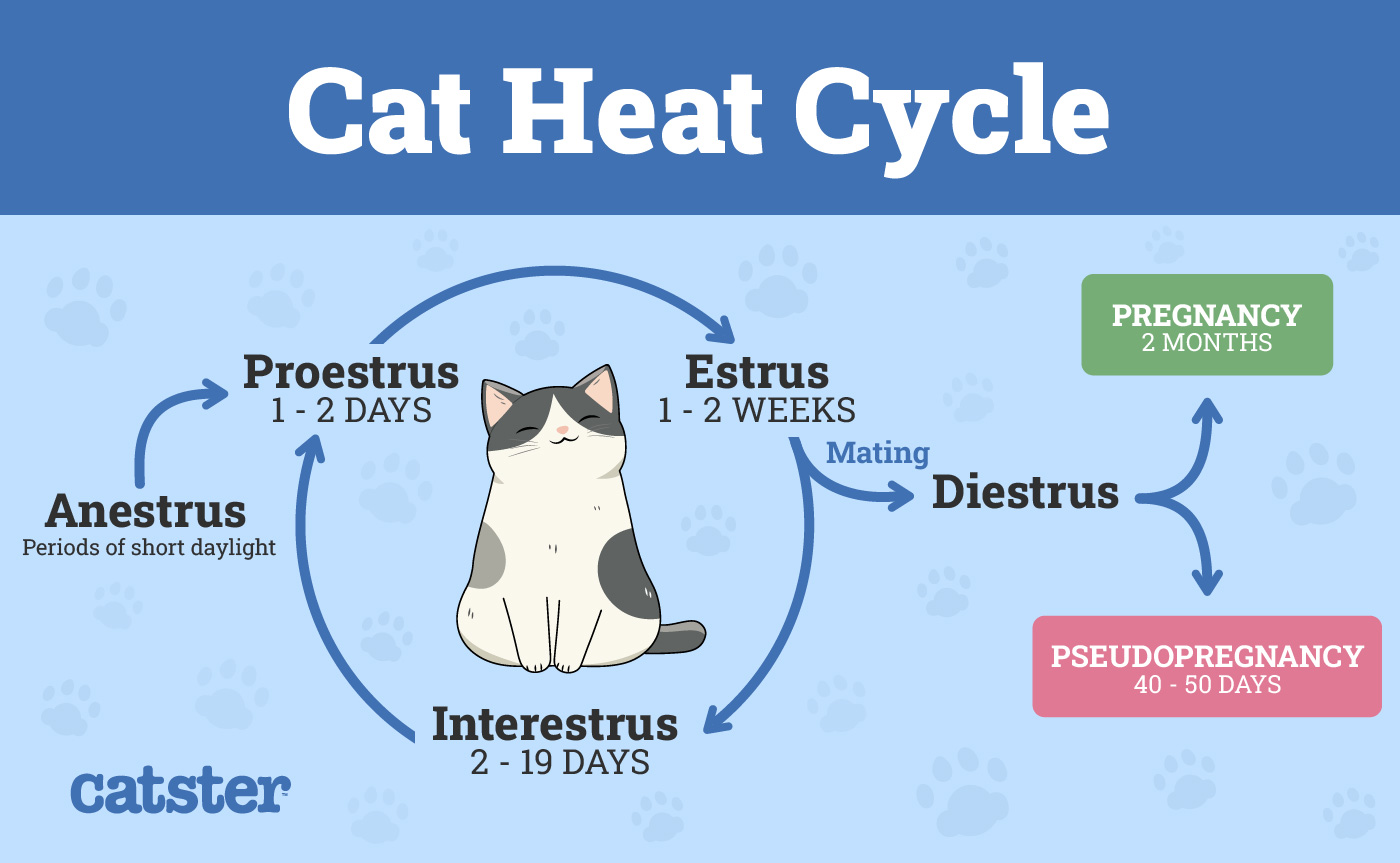
Making the Call: Spaying for Long-Term Health
Have you ever noticed your feline friend acting a little…out of sorts? Perhaps her meows have taken on a more insistent tone, or she seems extra restless and searching for escape routes. These could be signs that your cat is experiencing a heat cycle. While a natural part of feline biology, heat cycles can be disruptive for both cats and their humans. Spaying, also known as ovariohysterectomy, offers a safe and effective solution, promoting your cat’s long-term health and well-being.
Understanding the Gift of Spaying: A Shield Against Health Concerns
Spaying involves the surgical removal of a cat’s ovaries and uterus. This simple procedure offers a multitude of benefits, including:
- Banishing the Blues of Heat Cycles: Imagine a world where your cat doesn’t have to endure the physical and emotional rollercoaster of heat cycles. Spaying eliminates these cycles, preventing the yowling, marking territory, and restlessness that often accompanies them.
- Building a Fortress Against Infections: Heat cycles can increase the risk of urinary tract infections (UTIs) and a serious uterine infection called pyometra. Spaying removes this risk, giving your cat a valuable shield against these potential health threats.
- Lowering the Risk of Cancer: Just like humans, cats are susceptible to certain cancers. Spaying significantly reduces the risk of mammary cancer, a serious health concern for unspayed felines.
The Right Time for Spaying: Striking the Perfect Balance
The ideal age for spaying kittens can vary depending on several factors. Generally, veterinarians recommend spaying kittens between the ages of four and six months. Here’s why this timing is advantageous:
- Early Protection: Spaying at a young age provides your kitten with the benefits mentioned above right from the start, safeguarding her health for years to come.
- Minimally Invasive Procedure: Spaying a young kitten is often a simpler and less invasive surgery compared to spaying an adult cat.
- Responsible Breeding Considerations: If you’re a breeder with a responsible breeding program, spaying your cats after they’ve completed their breeding role is an option. However, it’s crucial to consult a veterinarian and follow ethical breeding practices.
Weighing the Scales: A Look at Spaying’s Drawbacks (and Why They Pale in Comparison)
Like any medical procedure, spaying comes with some potential downsides. One concern some owners have is the possibility of weight gain after spaying. However, this is often manageable through adjustments in diet and exercise. Remember, a healthy weight is essential for your cat’s overall well-being, and a veterinarian can guide you in creating a suitable weight management plan.
Ultimately, the health benefits of spaying far outweigh any potential drawbacks. It’s a wise investment in your cat’s long-term health and happiness.
Recovering Like a Champion: Post-Operative Care for Your Cat
After the spaying procedure, your veterinarian will provide detailed instructions on caring for your recovering feline friend. Here’s a general idea of what to expect:
- Comfortable Recuperation: Allow your cat to rest comfortably in a quiet, familiar space. Provide her with a soft bed and freshwater within easy reach.
- The Importance of the Collar: An Elizabethan collar (cone) might be necessary to prevent your cat from licking or scratching the incision site, which could hinder healing.
- Keeping an Eye on the Wound: Monitor the incision site for any signs of redness, swelling, or discharge. If you notice anything concerning, contact your veterinarian immediately.
With a little TLC and following your veterinarian’s guidance, your cat will be back to her playful self in no time. Spaying is a safe and effective procedure that contributes significantly to a long and healthy life for your feline companion. How AI, ChatGPT maximizes earnings of many people in minutes
Navigating the Heat: Management Strategies for a Smooth Ride
If you haven’t decided to spay your cat yet, or she’s experiencing a heat cycle in between scheduled procedures, there are ways to manage this time effectively. Here are some tips to ensure a smoother experience for both you and your cat:
Keeping Your Cat Entertained: A World of Enrichment
A bored cat during the heat is a recipe for mischief! Combat this by enriching your cat’s environment with engaging toys, interactive games, and climbing structures. Puzzle feeders can also provide mental stimulation and keep her occupied. Rotate toys regularly to maintain her interest.
Calm and Consistent: The Pillars of a Peaceful Heat Cycle
Imagine your cat thriving in a predictable routine. Sticking to regular feeding times, playtime, and cuddle sessions during heat can provide her with a sense of security and minimize stress. Avoid introducing new people or pets into the environment during this time if possible. Motivation – Mind – Success – Thinking – Productivity – Happiness
Keeping Your Cat Safe: The Importance of Indoor Living
During a heat cycle, a cat’s instincts take over. The urge to mate is strong, and an unspayed cat will do everything in her power to find a partner. This can lead to her escaping through even the smallest openings, putting her at risk of:
- Getting Lost: Outdoor dangers like cars, unfamiliar territory, and predators can pose a serious threat to an adventurous cat in heat.
- Exposure to Diseases: Unspayed cats who roam freely can come into contact with other cats carrying diseases like feline leukemia and feline immunodeficiency virus (FIV). These diseases can have serious health consequences.
- Unwanted Pregnancies: If your cat finds a mate while outdoors, you might end up with a litter of kittens you weren’t prepared for.
Indoor living is the safest option for your cat during heat and throughout her life. Provide her with a stimulating indoor environment with plenty of vertical space to climb and explore. Consider building a catio, a secure outdoor enclosure, if you want to give her access to fresh air and sunshine in a controlled setting. Business – Money Making – Marketing – E-commerce
Seeking Professional Help: When to Call Your Veterinarian
While the tips mentioned above can help manage your cat’s heat cycle, there are situations where seeking professional help from your veterinarian is crucial. Here are some signs to watch out for:
- Excessive Vocalization: Constant yowling or meowing that doesn’t subside with attention or playtime might indicate underlying stress or discomfort.
- Destructive Behavior: Scratching furniture, clawing at doors and windows, or spraying urine can be signs of frustration or anxiety during the heat.
- Visible Discharge: A bloody or foul-smelling discharge from the vulva could be a sign of infection and requires immediate veterinary attention.
- Lethargy and Loss of Appetite: If your cat seems unusually lethargic, loses her appetite, or exhibits other concerning signs of illness, don’t hesitate to consult your veterinarian.
Remember, your veterinarian is your partner in ensuring your cat’s health and well-being. Don’t be afraid to ask questions or seek guidance during your cat’s heat cycle or any other time you have concerns.
By understanding the feline heat cycle, its potential challenges, and the available management strategies, you can navigate this natural process with confidence. Spaying your cat remains the most effective way to prevent heat cycles and ensure your feline friend lives a long, healthy, and happy life. Health books, guides, exercises, habits, Diets, and more
Beyond Cats: Feline Fertility & Breeding
The feline heat cycle is a natural biological process, and for some cat owners, breeding their cats might be an exciting possibility. However, venturing into the world of feline reproduction comes with significant responsibilities. Let’s explore some key considerations for responsible cat breeding practices.
Responsible Breeding: A Commitment to Cat Care
Breeding cats goes far beyond simply allowing two felines to mate. Responsible breeders are dedicated to the well-being of their cats throughout their lives. This includes providing them with high-quality nutrition, spacious and stimulating environments, and regular veterinary care. Responsible breeders also prioritize selective breeding practices to maintain and improve the breed’s desired characteristics while minimizing the risk of inheritable health conditions. Fitness – Meditation – Diet – Weight Loss – Healthy Living – Yoga
Health & Genetics: Building a Strong Foundation
Before breeding any cat, it’s crucial to have them undergo thorough health screenings recommended by your veterinarian. These screenings can identify potential genetic diseases that could be passed on to offspring. Additionally, responsible breeders invest in genetic testing to assess a cat’s suitability for breeding and identify any potential genetic disorders specific to the breed. This proactive approach helps ensure the health and well-being of future generations of kittens.
Finding the Right Breeder: Where Ethics Meet Expertise
If you’re interested in acquiring a purebred cat, finding a reputable breeder is essential. Look for breeders who are members of recognized cat associations and adhere to strict ethical breeding practices. These breeders prioritize the health and temperament of their cats and will provide detailed information about the breed’s history, lineage, and potential health concerns. Responsible breeders also screen potential adopters to ensure their cats are going to loving and responsible forever homes. RPM 3.0 – 60% CONVERSION & Money for Affiliate Marketing
The Power of Adoption: Filling Empty Hearts and Homes
Cat adoption from shelters and rescues is a wonderful alternative to breeding. Countless cats of all ages, breeds, and personalities are waiting for loving homes. By adopting a cat in need, you’re not only giving them a second chance at a happy life but also helping to combat pet homelessness, a serious issue in many communities. Shelters and rescues often screen cats for health concerns and temperament, ensuring a smooth transition into your home.
Final thought: Your Feline Journey Awaits
Understanding the feline heat cycle equips you with valuable knowledge to navigate this natural process effectively. Whether you choose to spay your cat, manage her heat cycles, or explore responsible breeding practices, this information empowers you to make informed decisions for your feline friend’s health and well-being.
Empowered by Knowledge: This journey of understanding your cat’s heat cycle equips you to become an advocate for their health. Armed with this knowledge, you can have open conversations with your veterinarian, ask informed questions, and make choices that contribute to a long and happy life for your furry companion. Cat accessories on Amazon
Beyond Biology, a Bond of Love: Spaying your cat is a decision about reproductive health, but it doesn’t diminish the deep love and connection you share. Your cat will continue to be your cuddly companion, your source of amusement, and your loyal friend, offering purrs and head nudges regardless of their reproductive status. The bond you share transcends biology and is built on mutual love, respect, and care.
Remember, responsible cat ownership is a lifelong commitment. By prioritizing your cat’s health and well-being, you’re fostering a fulfilling relationship that brings joy to both of you for years to come.
Other Interesting Articles
- How to Tell if Your Cat is in Pain after Surgery: How to Help
- How to Tell If Your Cat Loves You The Most: 23 Signs
- 20 Tips On How to Comfort A Scared and Frightened Cat
- 26 Signs Your Cat Can’t Breathe: A Guide to Help It Recover
- Cat Trilling Sound: What Does It Mean, How To Handle
- Cat Chattering Sound: What Does It Mean, How To Deal With
- How to Take Care of A Kitten 2 Months Old: Tips, Guide
- How to Feed A Newborn Kitten That Won’t Eat: 19 FAQs
- How to Care for Your Cat After Spaying or Neutering
- Cat Excessive Yowling: Why Cats Yowling: What You Can Do?
- How to Regain A Cat’s Trust after Hitting It: 16 Tips to Apply
- How to Tell If My Cat is in Pain after Spaying: How to Help
- How to Help Cats Get Along with Dogs: 17 Beginner’s Tips
- Keep Your Kids and Cats Safe: 15 Effective & Simple Tips
- How to Feed A Newborn Kitten: 30 Essential Tips for Beginners
- Do Cats Have Emotions Like Humans, Dogs? 10 Ways to Feel
- Petting A Scared Cat: 15 FAQs to Comfort A Fearful Cat
- 18 Implied Messages Your Cat Is Sending You With Its Tail
- How to Help Cats Get Along with Each Other: 14 Useful Tips
- 7 Causes of Cat Aggression: Biting, Fighting, Attacking
